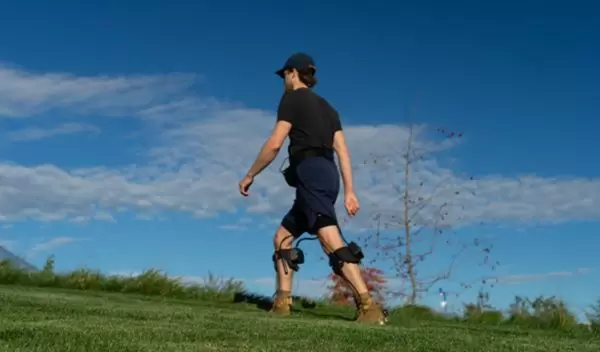
Researchers use new approach to calibrate soft robotic exosuit to an individual
Harvard University researchers, partially funded by the U.S. National Science Foundation, have developed a soft robotic exosuit that customizes itself to the user for personalized and activity-specific assistance. This new class of wearable assistive technology applies mechanical help to the user's joints and muscles. The robotic exosuit can be calibrated to the user and adapt to a variety of real-world walking tasks in a matter of seconds. The researchers published their findings in Science Robotics.
The team of roboticists, movement scientists and clinicians captured ultrasound images of the calf muscles of participants as they performed a series of walking tasks. "From these pre-recorded images, we estimated the assistive force to be applied in parallel with the calf muscles to offset the additional work needed to perform during the push-off phase of the walking cycle," said Krithika Swaminathan, co-author of the study.
Co-author Robert Howe added that "our muscle-based approach enables relatively rapid generation of individualized assistance profiles that provide real benefit to the person walking.”
The exosuit was able to quickly adapt to changes in walking speed and incline when tested in real-world situations. The team plans to test the system capacity to make constant, real-time adjustments next.
Millions of people with walking impairments or limited mobility could benefit from the unobtrusive assistance exosuits can provide. First responders and individuals who carry heavy loads would also benefit from using assistive exosuit technology to partially alleviate their burden.


